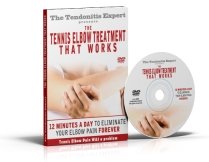Shoulder Dislocation And It's Relation To Shoulder Tendonitis
What is a Shoulder Dislocation?
The shoulder joint is a ball and socket joint. A Shoulder Dislocation is when the ball comes out of the socket.
In other words, when your arm bone pulls away from the bony shoulder area it usually sites in.
A shoulder can dislocate for a variety of reasons. But as a general concept, a shoulder will only come out of its socket when either
A. Too much torque is applied to the joint and the ball is forced from the socket.
B. A person’s ligaments are too lax or loose, reducing the amount of force necessary to remove the ball from the socket.
What does a Shoulder Dislocation have to do with Tendonitis?
A Shoulder Dislocation doesn’t directly cause Rotator Cuff Tendonitis.
But the dynamic created by dislocation can set you up to have Tendonitis in the future.
Dislocation causes trauma.
The nervous system responds to trauma with tightness and inflammation.
Tightness and inflammation depletes nutrition and results in physical pain and problem, a.k.a. Tendonitis.
What Happens When A Shoulder Dislocates?
The muscles of the rotator cuff help hold the shoulder together, but they are pretty mobile so most shoulder dislocations don’t injure them.
What gets directly injured are the ligaments that hold the shoulder together.
As the ball pulls away from the socket, ligaments that hold the arm bone to the shoulder bone get stretched and/or torn.
Ligaments are immobile cables that hold one bone to another bone. When ligaments are stretched or torn, they can no longer snugly, securely anchor their bones where they are supposed to be.
This is why shoulders dislocate more easily after the first dislocation.
What Happens AFTER A Shoulder Dislocates?
Immediately after dislocation, even as it happens, the nervous system freaks out and tries to protect you.
It tightens all the muscles up. A lot.
It kicks in an Inflammation Process.
Most of your pain is actually from the body’s reaction to the injury, rather than the injury itself.
The muscles get so tight it’s problematic. It actually cuts off circulation, a pain-spasm cycle kicks in, and it works together with Inflammation to create more pain.
But the ligaments are overstretched, so they're not holding the joint tightly like they're supposed to, so those too tight muscles are now freaked out that they have to do the job the ligaments used to do.
Inflammation traps fluid in the area (the reason for swelling) and releases chemical which enhance your sensitivity to pain.
If you press your finger onto an injury like a dislocation or Tendonitis, most if not all of the pain is actually from Inflammation chemical.
So everything tightens up to ‘guard’ the shoulder.
A Pain Causing Dynamic gets entrenched in the area.
Eventually, the shoulder ‘heals’ and doesn’t hurt so bad.
The Rest Of The Story
As I said, Shoulder Dislocations stretch the ligaments that hold the ball against the socket.
So the rotator cuff muscles then have to take up the slack for stabilizing your shoulder.
Which is a great back up plan, except that the human body wasn’t designed for that.
Shoulder pain is common for people that have dislocated their shoulders. The primary reason for this is that the muscles have to work constantly, and work hard constantly, to hold the shoulder in place.
Constantly. As in, ALL the time.
Meaning that your muscles are contracting, firing, working, harder than they are supposed to. Ultimately, that makes them ache or be sore, even hurt.
The most important long term self-care for someone that has dislocated their shoulder is to exercise the muscles of their shoulder, so the muscles will be strong enough, or at least better prepared, to do the job that the body is now demanding of them.
Again, What Does This Have To Do With Rotator Cuff Tendonitis?
Localized Inflammation and the Pain Causing Dynamic continue to play a role as your muscles work overtime to hold your shoulder secure.
The nervous system is always watching to make sure you’re safe, and it’s always noticing that there’s something amiss with your shoulder. It’s constantly feeling pain.
These three variables cause your muscles to become chronically tighter and tighter, this puts tension and strain on the tendons of your rotator cuff muscles.
Even without injury, you work out, are active, or use your arms for anything, really, you are susceptible to getting the tendonous wear and tear injury that is Tendonitis.
See: What Is Tendonitis to fully understand how Tendonitis works and the different factors you need to be aware of.
If you have the tendonitis dynamic that develops after a shoulder dislocation injury, you need to be extra careful so you don't inadvertantly add tendonitis -injury- into the mix.
Keep your shoulder muscles strong, because they now have to constantly do more work.
Keep them strong, keep them (gently) stretched out, and make sure to keep inflammation out.
Make sure that you know How To Reduce Inflammation.
Return to the top of this
Shoulder Dislocation page.
Go to the
Shoulder Tendonitis page.
Go to the main
Tendonitis page.
Go to the TendonitisExpert.com homepage.
| Share Your Story
|




